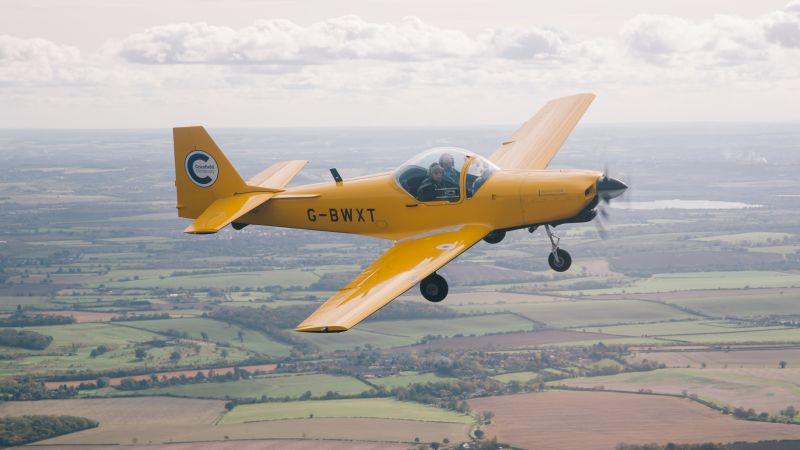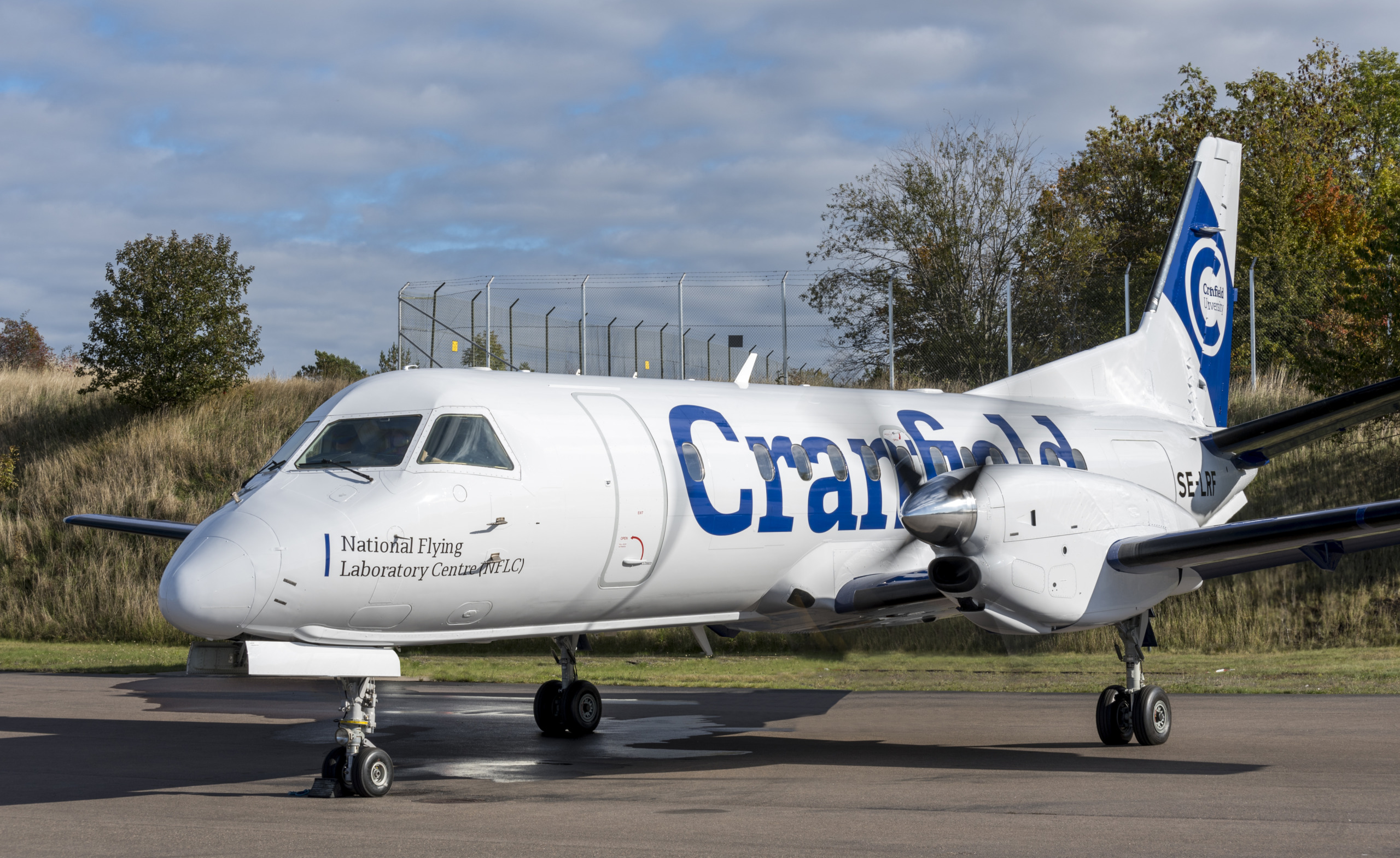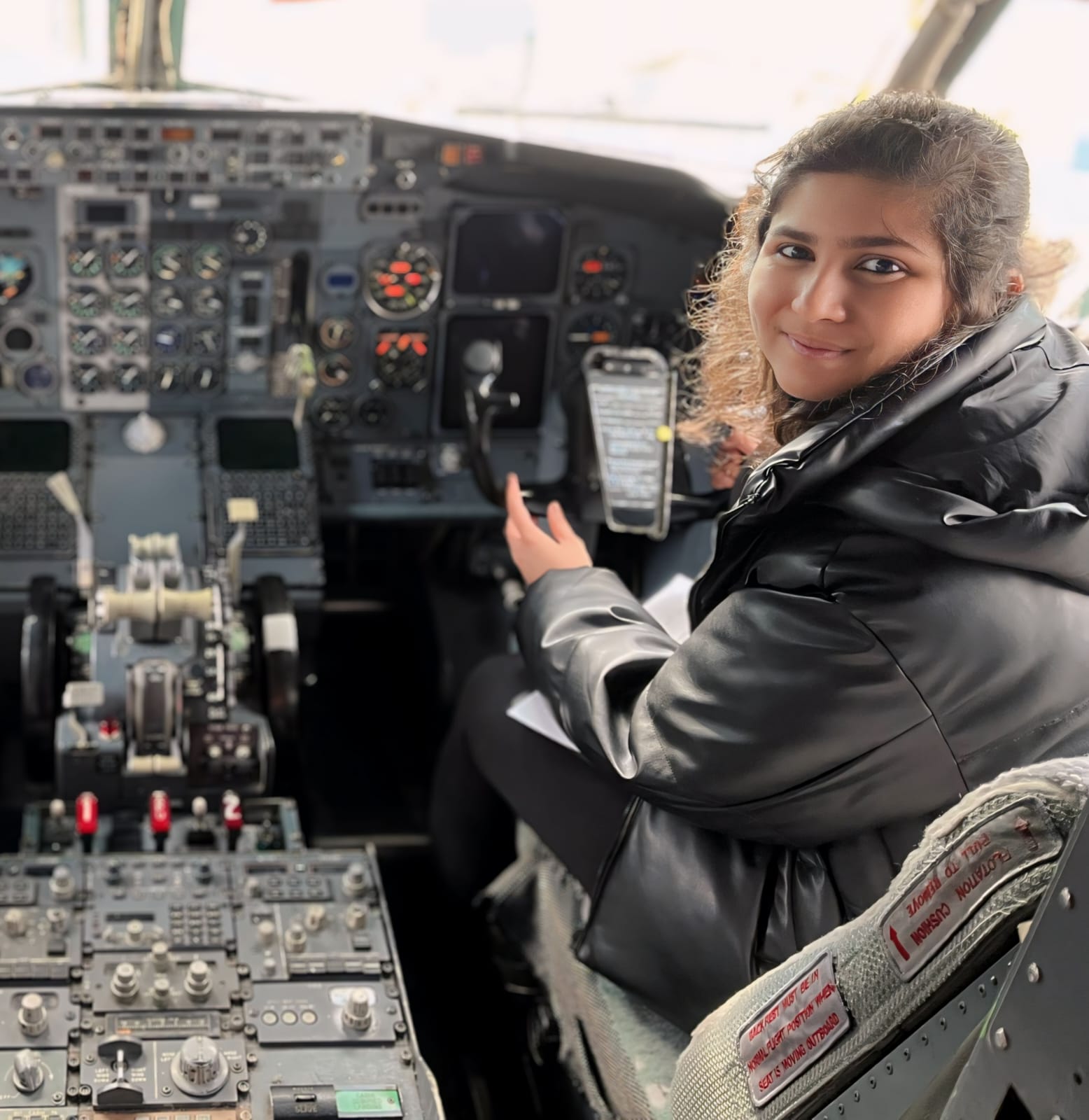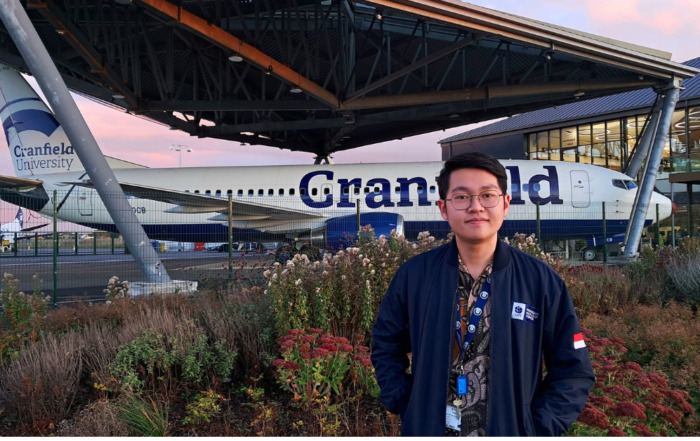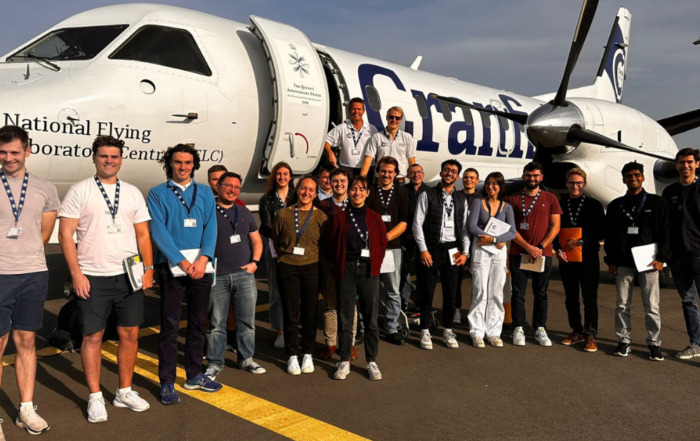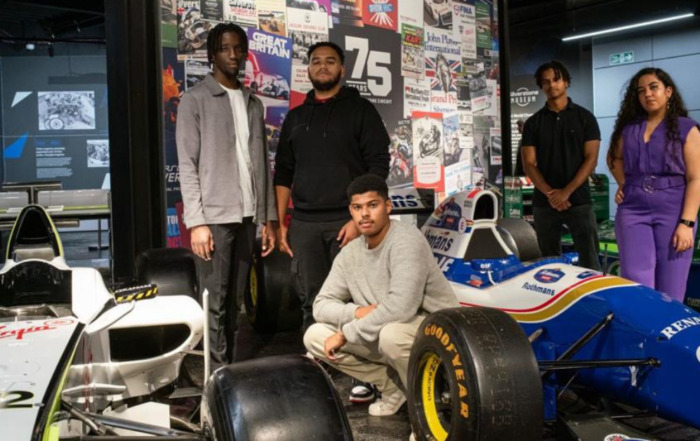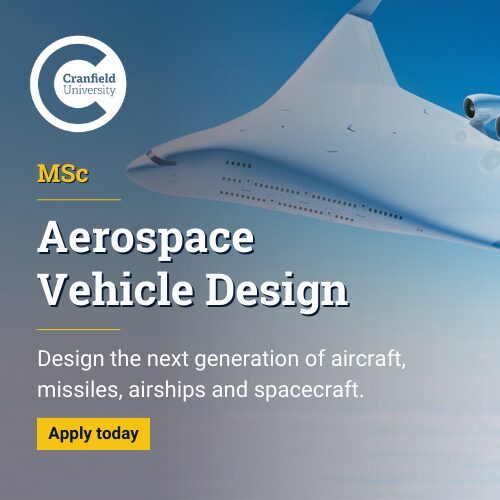Exploring the Aerospace Vehicle Design MSc at Cranfield University: A Path to a Revolutionary Future in Aviation
06/01/2025

In our recent conversation with Professor Mark Westwood, Head of the Centre of Aeronautics at Cranfield University, we explored what makes the Aerospace Vehicle Design MSc truly unique and why now is such an exciting time to be an aerospace engineer. We discussed everything from industrial connections and collaborations, student experience flights and famous alumni that have really made an impact in the field.
Cranfield University’s Aerospace Vehicle Design (AVD) MSc is one of the most esteemed programmes in the field of aerospace engineering, with a rich history dating back to 1946. Designed to equip students with the skills and mindset needed for successful careers in the aerospace industry, this course offers a comprehensive learning experience that blends technical expertise with hands-on industry practice.
Course structure: a balance between theory and practice
The AVD MSc is structured into two distinct phases: the first six months focus on taught modules and the group design project, while the final six months are dedicated to individual research.
- Taught element and group design project (first 6 months): The initial part of the course is not just about lectures and learning theory; students dive directly into the group design project. They are presented with a conceptual aircraft design, which could range from electric vertical take-off and landing (eVTOL) vehicles to supersonic transport aircraft. Over six months, students work in teams, mimicking real-world industry settings, with groups tackling specific areas such as structures, avionics and project management. The teamwork and problem-solving skills learned here are essential for industry success. These ‘softer’ skills alongside the technical and practical experience, really prepare our graduates to enter industry.
- Individual research project (final 6 months): After the group design project, students shift focus to an individual research project, where they explore cutting-edge topics such as hydrogen-powered aircraft or new propulsion technologies. They select a topic from a curated list, working closely with academic mentors to contribute original research to the field.
Tailoring your learning experience
Cranfield’s AVD MSc offers flexibility, allowing students to customise their learning experience to align with their specific interests and career aspirations. Students can choose from three streams: avionics, structures and design systems. Each stream offers specialised lectures that help guide the student’s learning path.
- Aircraft Design – a comprehensive overview of aircraft performance, structures and systems.
- Avionics Systems Design – understand the design of avionic systems, analysis, development, test and airframe integration.
- Structural Design (available for September intake only) – covers aircraft structures, airworthiness requirements, design standards, stress analysis, fatigue and fracture and fundamentals of aerodynamics and loading.
Beyond these streams, students are encouraged to attend any lectures offered within the course, even those outside their main focus area. This allows them to gain knowledge across various aerospace disciplines, expanding their expertise and providing a holistic understanding of the industry.
Industry collaboration: A key differentiator
What truly sets Cranfield’s AVD MSc apart is its strong alignment with industry. Through the Industry Advisory Board (IAB), which includes major aerospace players like Airbus, GKN and BAE Systems, the course team ensures that its curriculum remains at the cutting edge of industry needs. The collaborative approach means that students often work on real-world projects with industrial partners, gaining invaluable insight and exposure to current industry trends.
A standout feature is the group design project, where industrial partners set the conceptual design and students collaborate with them, attending design reviews and receiving industry-specific feedback. This close interaction with industry professionals ensures that students not only learn the theory but also understand its real-world applications.
I chose to study at Cranfield University because of the feedback provided by former students, so as well as its ties with industry. The Aerospace Vehicle Design MSc was exactly what I was looking for in terms of the theory covered in the taught modules and being able to apply this to the group and thesis projects.
A highlight from my time at Cranfield University would have to be taking part in the flying experience onboard the Cranfield acrobatic plane.
Taking learning to the sky
Students have the opportunity to work with the National Flying Laboratory Centre (NFLC), gaining hands-on experience with the Saab 340B aircraft, where they perform experiments and study aircraft stability. This exposure is unique to Cranfield, offering students a rare and practical look at aircraft operations.
Innovative technologies and research areas
Students on the AVD MSc are at the forefront of the aerospace industry, engaging with some of the most exciting and challenging technologies. Over the years, students have worked on projects involving revolutionary aircraft designs, including hydrogen-powered planes, electric tilt-rotor aircraft and supersonic transports.
As the industry moves toward more sustainable aviation solutions, Cranfield University’s emphasis on emerging technologies is especially timely. Students explore next-generation aircraft shapes, propulsion systems and configurations, preparing them to lead the transformation of air transport in the coming decades. The university’s active involvement in hydrogen fuel systems and liquid hydrogen test facilities further strengthens its position as a leader in sustainable aviation research.
A strong network of alumni and industry connections
Cranfield’s alumni network is another key asset of the AVD MSc. Graduates of the MSc go on to achieve remarkable successes in both research and industry. Notable alumni include Ralph Hooper, who played a critical role in the development of the Harrier Jump Jet and Alan Brown, the chief designer of the F-117A stealth fighter at Lockheed Martin’s Skunk Works.
The university’s strong connections with industry partners also enhance students’ employability. With an impressive employment rate of around 92% within six months of graduation, Cranfield’s alumni continue to contribute to the aerospace industry in a wide variety of roles. For example, one recent graduate was appointed CEO of Airbus Spain, underscoring the courses ability to nurture leadership talent.
The future of aerospace: a purpose-driven career
Looking ahead, the future of aerospace is set to be incredibly exciting and Cranfield University’s AVD MSc is at the heart of this transformation. As the world moves toward sustainable aviation, Cranfield graduates are well-positioned to drive innovation. With cutting-edge research in hydrogen propulsion, sustainable aircraft design and other emerging technologies, Cranfield’s students are not just learning to design aircraft—they are contributing to the future of aviation.
Cranfield’s focus on building state-of-the-art facilities and hiring academic staff with expertise in these cutting-edge technologies, means that students learn directly from the leaders in the field. This proximity to real-world challenges and solutions prepares graduates to become the next generation of aerospace engineers, with the skills and vision necessary to tackle the industry’s most pressing issues.
“Cranfield’s global reputation in the field is unmatched, but what truly sets it apart is its status as the only university in the world with its own operational airport. This unique feature not only provides incredible hands-on learning experiences but also adds an exhilarating dimension to everyday life on campus.”
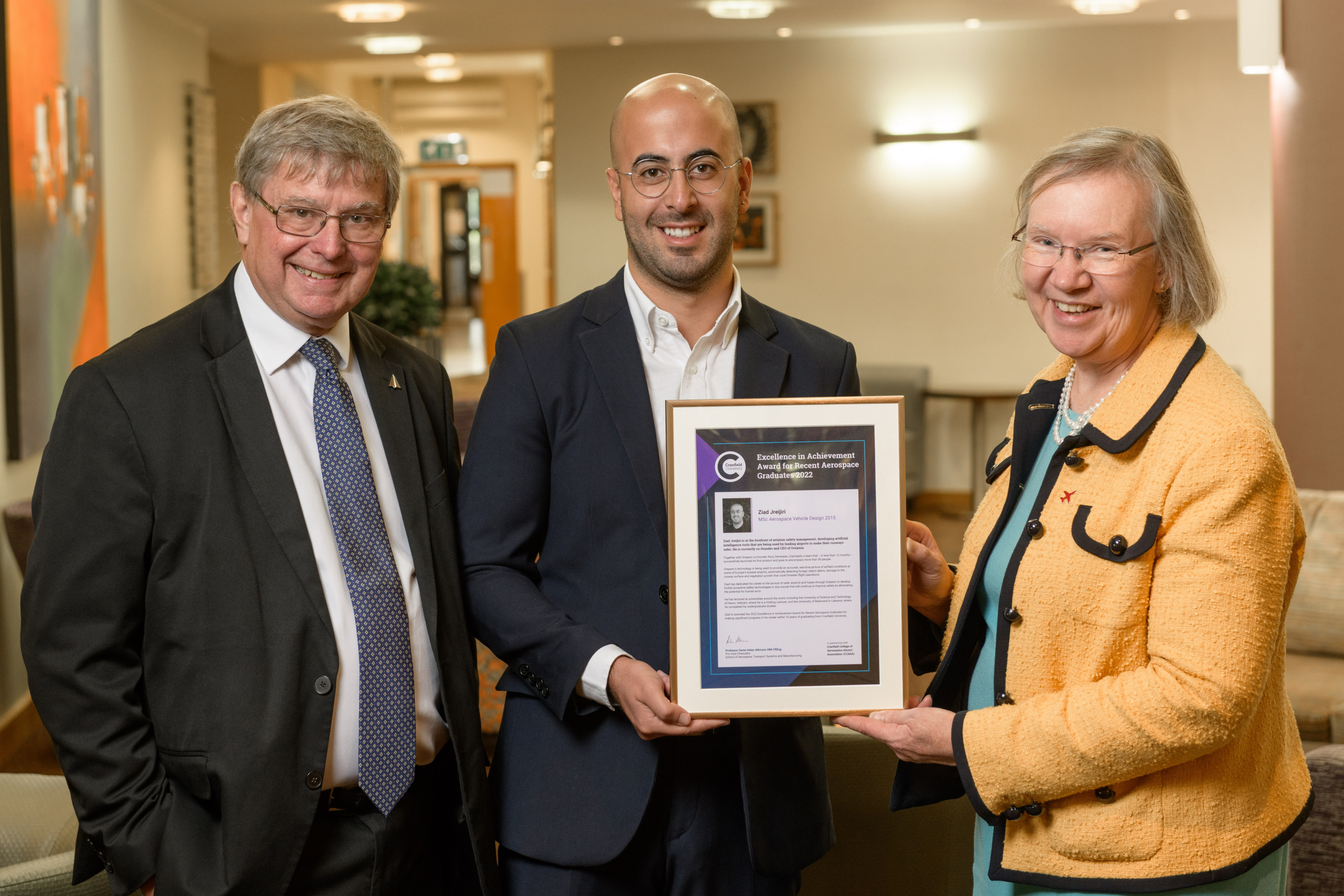
A unique opportunity for the March 2025 intake
The upcoming March 2025 intake offers unique advantages. The smaller cohort size provides more opportunities for personalised attention from academic staff, fostering a more interactive and focused learning environment. Furthermore, graduating in March may offer a distinct advantage when entering the job market, as the timing could align with hiring cycles in the aerospace industry.
In conclusion, the Aerospace Vehicle Design MSc at Cranfield University is a prestigious and industry-aligned course that offers students an unparalleled opportunity to immerse themselves in the future of aerospace. With its emphasis on hands-on learning, industry collaboration and cutting-edge research, it provides the ideal foundation for anyone looking to make a meaningful impact in the world of aviation.
Are you ready to design the future of aerospace?
“Cranfield’s global reputation in the field is unmatched, but what truly sets it apart is its status as the only university in the world with its own operational airport. This unique feature not only provides incredible hands-on learning experiences but also adds an exhilarating dimension to everyday life on campus.”
William Widjaja: 2023 ISTAT Foundation Scholar
William Widjaja is one of 37 recipients of the 2023 International Society of Transport Aircraft Trading (ISTAT Foundation) Scholarship, studying Aerospace Vehicle Design MSc. The ISTAT Foundation scholarship aims to help young people develop ...
David Falcó Orduna: Why I chose Aerospace Dynamics MSc at Cranfield
Hi everyone! My name is David Falcó and this year I will be studying an MSc in Aerospace Dynamics here at Cranfield University. I’m from a beautiful Spanish city on the ...
Laila Fadli Dokkali: Being a MSc Motorsport scholar is a ‘life changing opportunity’
"I am Laila Fadli Dokkali, I was born in Spain as a daughter of African immigrants, where I also grew up and lived, until moving to the UK four years ago. "From a very young ...
Categories & Tags:
Leave a comment on this post:
You might also like…
Screening for FTSE 100 companies on Bloomberg
So you’re researching an index and need some data on its constituent companies? Bloomberg’s Equity Screening tool makes light work of this, not just for the FTSE, but for indices, exchanges and sectors worldwide. Type EQS ...
Accelerating my future: How Cranfield put me on the fast track to automotive safety innovation
Hello! I’m Michaela Kaiser, and I’m thrilled to share my journey studying abroad. I’m from Calgary, Canada, and I recently graduated from Cranfield’s MSc Automotive Engineering course. My path to Cranfield ...
From Myanmar to Cranfield: My path to Renewable Energy
As someone who is passionate about sustainability, my career goal is to build a path in the renewable energy sector. My aspirations comes from the benefits of developing sustainable energy sources and ensuring energy ...
From lifelong dream to circular economy leader: Q&A with Himesha Randeni on the Environmental Management for Business MSc
What does it take to turn a lifelong passion for the planet into a fulfilling and impactful career? For Himesha Randeni, the answer was the Environmental Management for Business MSc at ...
Library services over the Christmas period
Kings Norton Library will be open 24/7 throughout the holiday period as a study space. Library staff will work until 6pm on Friday 19 December and will resume their normal working hours from 9am on ...
From the control tower to Cranfield: My journey to shaping the future of airports
Hi, I’m Karima Lakouz, and this is the new me! I’m a Moroccan full-time student, aiming to graduate in 2026 with an MSc in Airport Planning and Management from Cranfield University. ...


